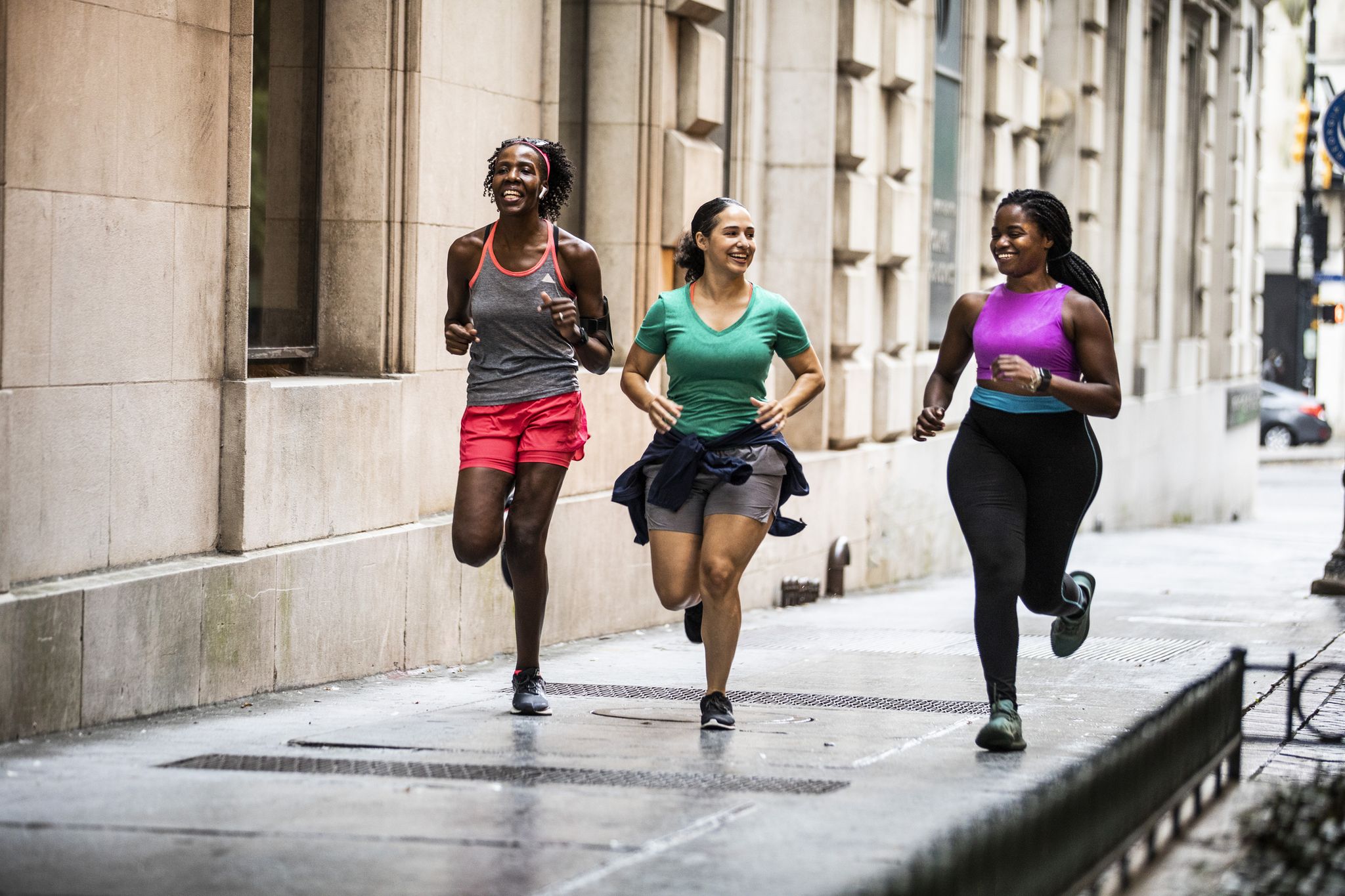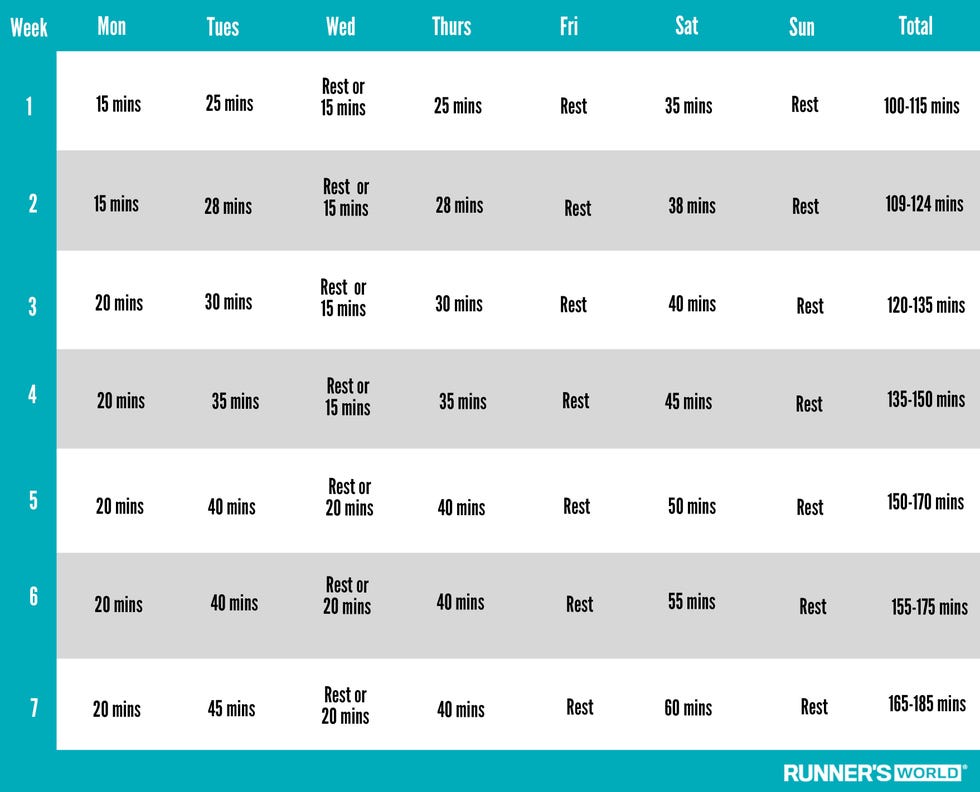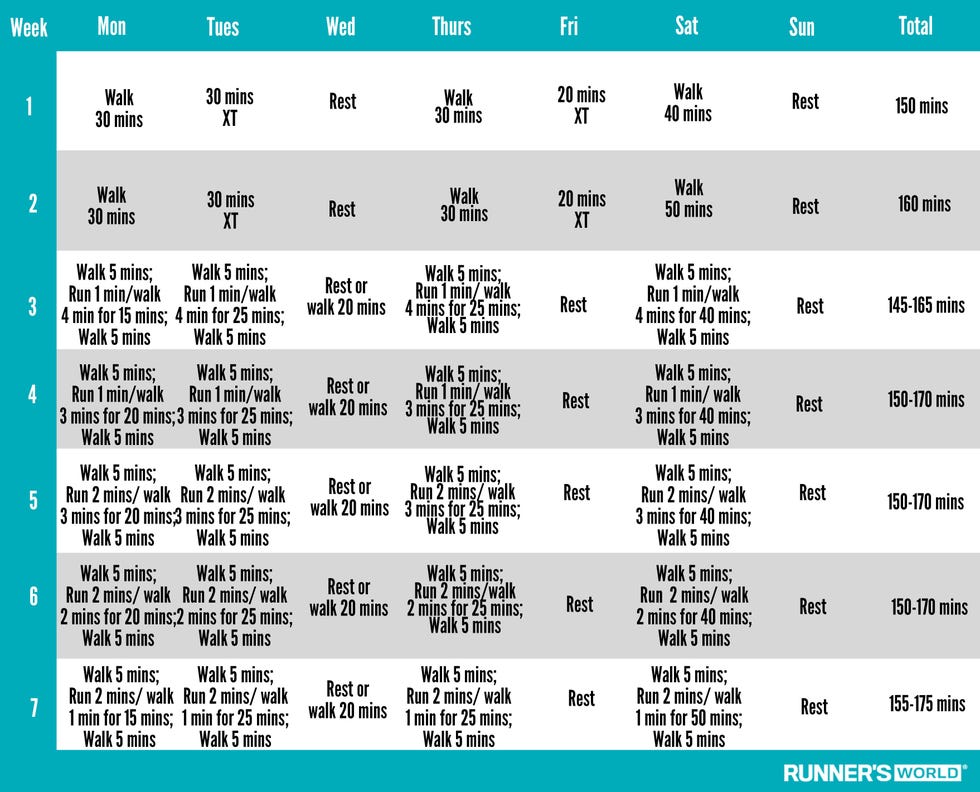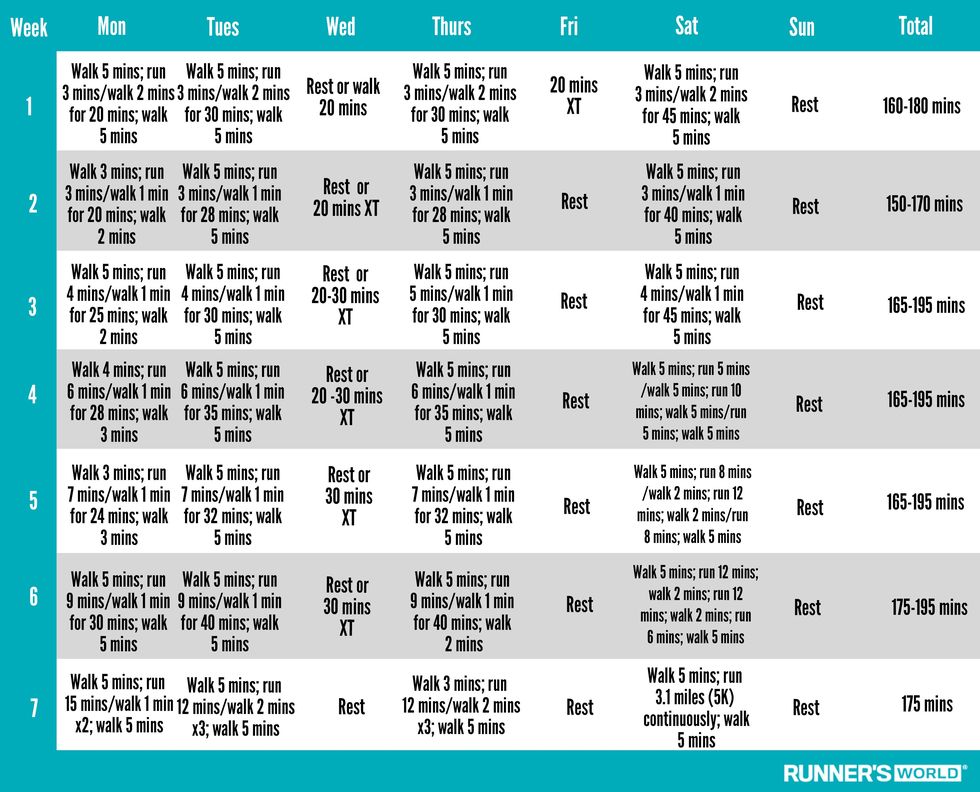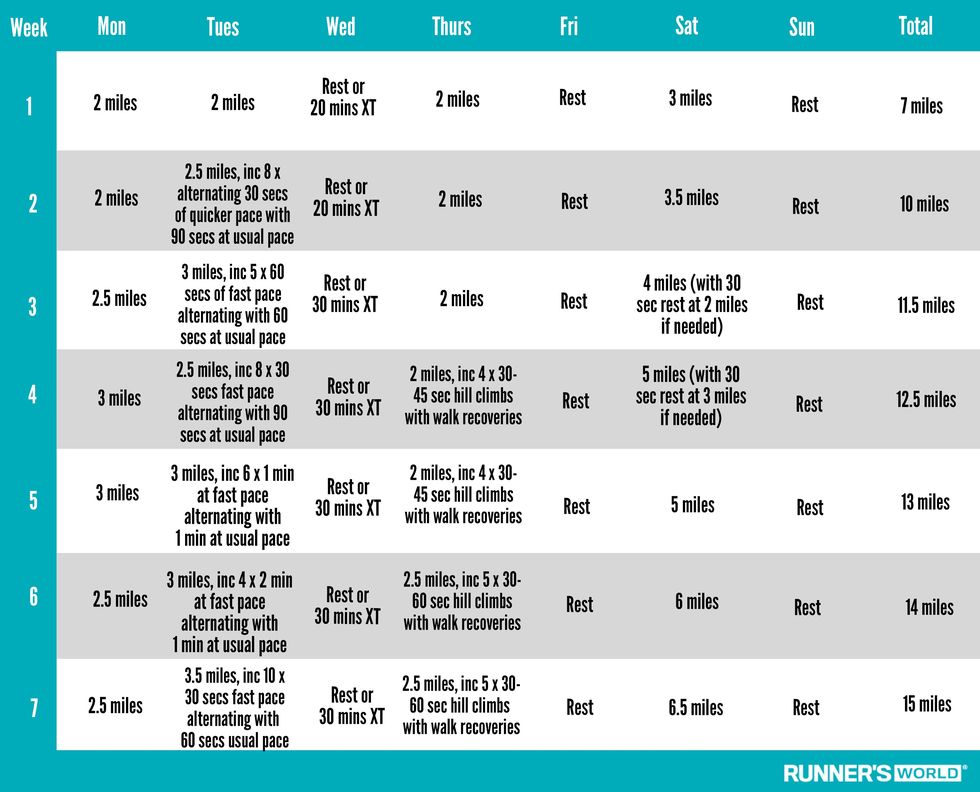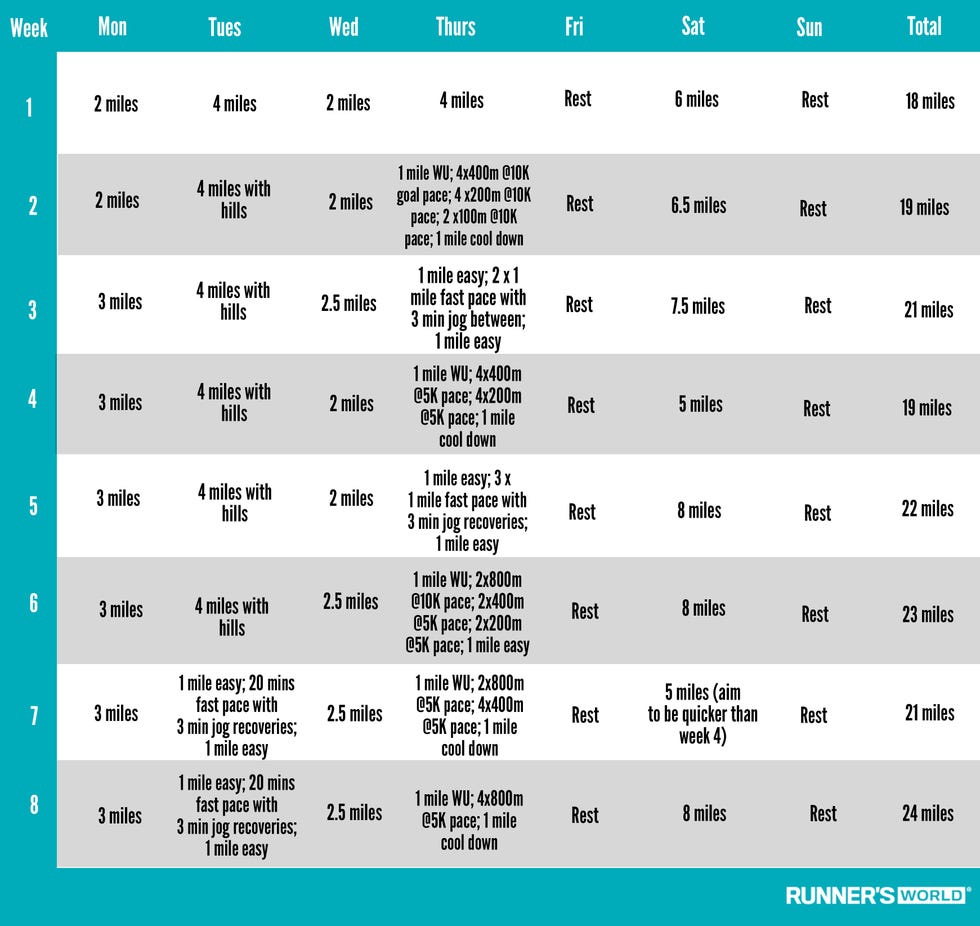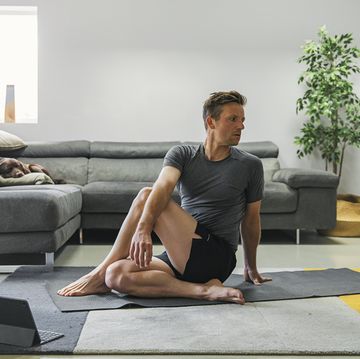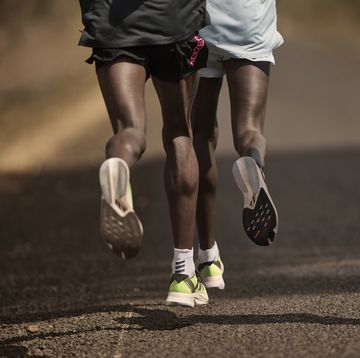It's impossible to miss and feel uninspired by running events like the London Marathon – whether you watched it from the roadside or on TV, or heard all about it online, you may well have felt the drive to lace up, get outside and start running yourself.
But, if you're new to running or returning from a running hiatus, how do you go about taking those tough first few steps? Even the thought of putting one foot in front of the other can feel daunting, especially if you’ve never considered running as something for you.
That said, there is no running ‘type’ – no matter what your background or current fitness level, you can do it and make it your own. Start running today and you’ll soon find that it becomes a regular, uplifting part of your routine, and something you turn to for both your mental and physical wellbeing.
Following a training plan that aligns with your ability, goals and lifestyle is a great way to make tangible progress and stay accountable, injury-free and inspired. So, to help you get started, we’ve teamed up with expert coach Sam Murphy to develop a series of training plans to suit all beginner targets, whether that’s to start moving for the first time or to crank up the power and get faster.
Goal 1: Get motivated
Just like brushing your teeth or doing the food shop, running – and movement more broadly – can easily become second nature if you allow space for it in your routine.
‘Once it’s a habit, exercise feels easier and doesn’t take as much willpower when you don’t feel like it,’ says Charles Duhigg, author of The Power of Habit. Here are some quick tips for to ignite some running motivation:
Make a plan
According to Duhigg, every habit is made up of a group of cues (like time, place, music or other people), a reward (like a massage or your favourite meal) and a routine (the workout itself). Write down your cues and rewards and put up your plan somewhere you can see it.
Keep it regular
At the start, run at the same time of day and listen to the same pre-run music or podcast, for example. ‘The cues have to be consistent,’ says Duhigg. ‘You’re creating neural pathways that make the activity a habit.’
Reward yourself
Treat yourself to something you enjoy straight after you run or move, so your brain can associate exercise with an immediate reward. ‘You have to teach the brain through experience,’ says Duhigg. The reward could be something you like to eat or an activity you love doing.
Build a support system
Equip your running routine with things that will make you feel good. That might be running with friends and arranging a post-run coffee, or going to a parkrun on a Saturday morning. Be sure to track your runs along the way – via a running app, GPS running watch or old fashioned pen and paper – so you can see you progress, too.
Goal 2: Get moving
Before your start running, get into the habit of regular exercise with some brisk walking. By this, we don’t mean a leisurely ‘window shopping’ pace, but a faster, ‘I need to hurry or else I might be late’ pace. While you can also use a stationary bike or elliptical to get accustomed to moving, walking is an excellent foundation for running and holds the trump card for convenience. After all, the best exercise is the type that you can and want to do consistently.
Walking plan to prepare your body for running
Who is it for?
This seven-week* plan is for anyone who is completely new to exercise. It involves only walking, which gives your bones, muscles, tendons and fitness the foundation they need to progress to running without injury.
Room to manoeuvre?
If you don’t have time for your longer session, split the week’s longest workout in half and do one half in the morning and the other in the afternoon. This might work well around a commute to work, for example, where you could get off a bus or train at an earlier stop to fit in more walking steps.
*If your BMI is 35 or higher, you’re over 60, or you just want to make progress more slowly, use this plan for eight to 12 weeks.
Goal 3: Start running
You’re ready to run – and the good news? You’ll now be moving at a faster pace, so you’ll be covering more distance without adding workout time to your schedule. At the end of this seven-week plan, you’ll be able to complete 175 minutes of exercise per week and running for approximately twice as long as you walk.
Beginner run/walk plan
Who is it for?
This seven-week plan is for those who already active. In the first two weeks, you’ll exercise for roughly 30 minutes per day, five days per week. Then, in the third week, you’ll start running.
Room to manoeuvre?
If you find yourself wanting a bit more of a challenge, pick up the pace. On any given day, work out for the same amount of time, but gradually build to a run/walk ratio of 4:2 minutes, then 6:3 minutes. If you find the plan is moving too quickly for you and you want to dial it back, repeat any week for as long as you like until you feel ready to push on.
Goal 4: Run non-stop
Want to build your endurance and eliminate the walk breaks? This plan steers you from run/walk workouts to continuous running, up to the 5K distance. Each run should be done at a conversational pace, so if you find yourself struggling to catch your breath while you’re on the move, slow down.
Beginner plan to help you run your first 5K
Who is it for?
When you start this seven-week plan, you should have already spent at least six weeks run/walking for roughly 30 minutes at a time, five days per week. You should also be running for at least twice as long as you walk.
Room to manoeuvre?
This running plan offers plenty of flexibility. If the week’s workouts feel too easy, skip ahead to the following week. Or, if your body’s response tells you that the training is moving too fast, spend two weeks or more at each week – although you should aim to complete the programme within a 14-week period.
Goal 5: Run further
If you can comfortably run 5K non-stop and now want to run that bit further, this plan will help you to develop the endurance you need to run a 10K while building the strength to race a 5K. As such, this plan includes some hill running and loosely structured speed workouts.
Beginner plan to take you from 5K to 10K
Who is it for?
To benefit from this seven-week plan, you should have already spent at least six weeks running for 30 minutes or more at a time, five days per week. Ideally, you can run 5K without walking.
Room to manoeuvre?
If you’re ready for a greater challenge, feel free to skip ahead to the following week – but don’t rush it. If you push too hard, too soon, you are putting yourself at risk of an injury, so for the sake of solid progress it’s better to build gradually and allow your body time to adjust to the extra load. If you feel the plan’s moving too fast, you can repeat any week until you’re ready to progress, but still aim to complete this plan within 14 weeks.
Goal 6: Run faster
This eight-week plan is the one for you if you can already run five or six miles and are now itching to run a bit faster. It will develop endurance, introduce you to speed work to boost your leg and lung power and enhance your ‘pace awareness’ so you don't go out too fast.
Beginner plan to help you get faster
Who is it for?
This eight-week plan is for ‘advanced beginners’ – in other words, people who can already run around 18 miles per week, including a five-mile long run.
Room to manoeuvre?
If time pressures mean you can only run four days a week rather than the prescribed five, you can skip the shortest easy run of the week. There’s flexibility as to when you fit in the other sessions, too. While most runners tend to do their long runs at the weekends, for example, you can shift this to a weekday if it better suits your routine.
Start running successfully
Now you’ve chosen your plan and have your workouts in place, half the battle is already won – but before you kick out to clock your first session, run through the following checklist to make sure you’re good to go:
Get checked
If you’re over the age of 40, have a BMI of 35 or higher, or have a family history of heart disease, talk to your doctor before you start running so you can get the medical all-clear.
Get good gear
You’ve just remembered the old pair of trainers that have been hibernating in the back of the wardrobe for several years – they’ll be good enough to run in, right? Sadly, this is unlikely to be the case. Worn or ill-fitting shoes are a recipe for injury, so visit a specialist running shop to get equipped with a pair of comfortable, sturdy running shoes that fit your goals, budget and feet. ‘There’s no magical shoe that makes running easier, but a bad shoe will ruin your running,’ says physiotherapist Bruce Wilk. It’s also worth investing in running socks made from sweat-wicking fabrics to help keep blisters at bay.
Sneak in activity
Don’t feel restricted by your running plan – if you find additional time throughout the day to get active, do! You could incorporate a 15-minute walk into your lunch break, for instance, or set an alarm every hour to remind you to get up and move. In fact, a study in the International Journal of Behavioural Nutrition and Physical Activity found that taking a five-minute walk break once an hour burns 132 calories over the course of an eight-hour working day.
Find your pace
When you first start running, the trick is to be consistent enough to build strength and endurance, but slow enough so that you don’t get injured. With that in mind, aim to complete your training runs at an easy, conversational pace, which you feel you could maintain forever. ‘A lot of runners try to run too fast, because they feel like they’re not a runner unless they go at X pace,’ says coach Jeff Gaudette. ‘Your pace needs to be comfortable. If you run faster than you should, it’s going to hurt all the time and you’ll never get to a point where you can do it for 30 minutes.’ So, develop the endurance first – the speed will come later.
Find your place
For ease and motivation, map out a few safe, scenic, traffic-free routes that you can cover in various weather conditions and at various times during the day. There are many reliable running apps that can help you with this.
Record your runs
Consider how you’ll want to track your individual runs and overall progress. You could use a trusty notebook, a running app or one of the many GPS running watches on the market right now – there’s one to suit all runners and price points.
Be patient
When you start running, you may feel disheartened or worried that you aren’t seeing instant changes in your appearance or improvements in your fitness – but don’t panic. ‘Be aware that it takes time to condition your muscles, ligaments and tendons,’ says exercise physiologist Susan Paul. The physical and indeed mental benefits of running will soon follow, justifying your fantastic decision to start running in the first place.
